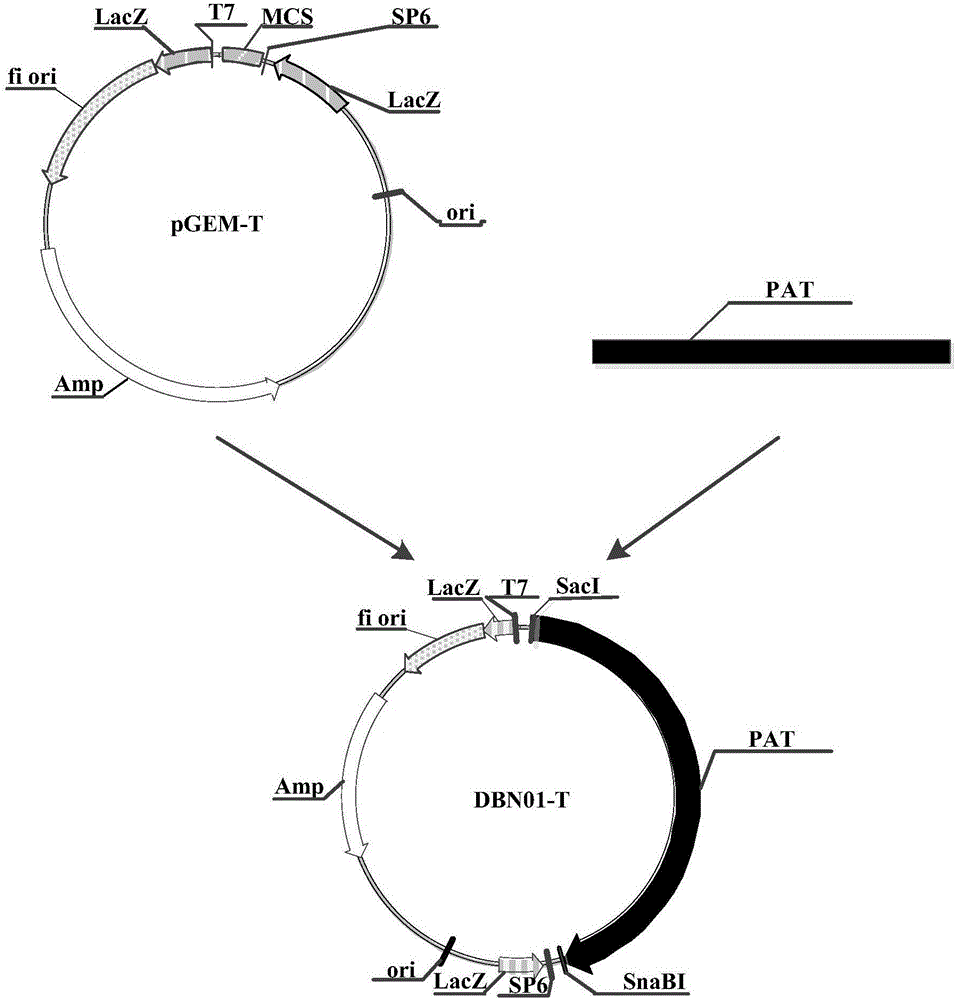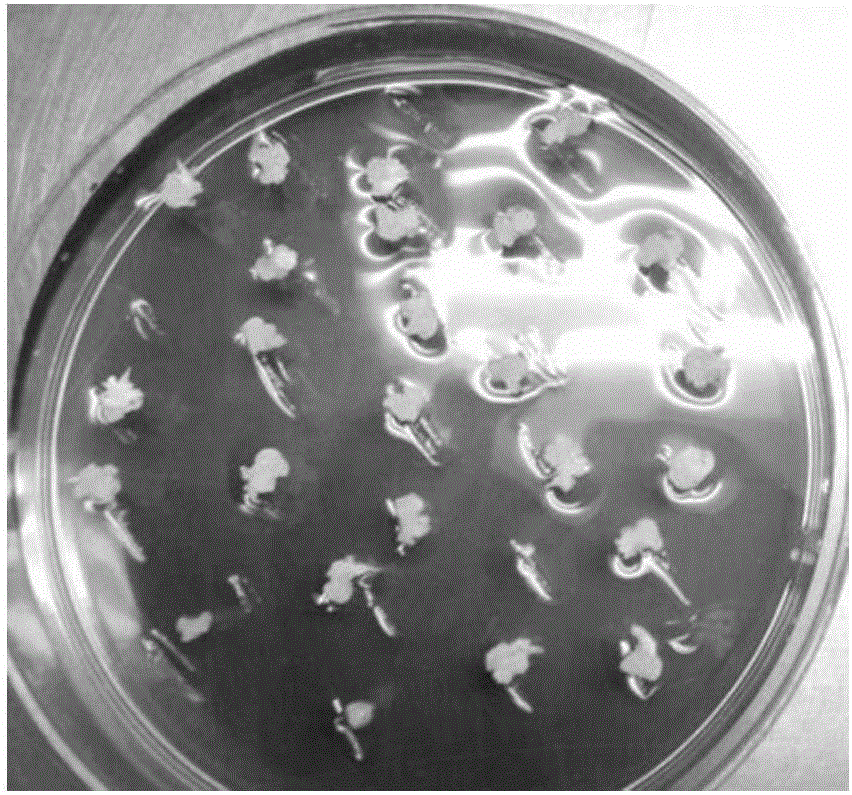Corn transforming method
A corn, suspension cell technology, applied in biochemical equipment and methods, horticultural methods, botanical equipment and methods, etc., can solve the problems of long cycle, seasonal restrictions and high cost
- Summary
- Abstract
- Description
- Claims
- Application Information
AI Technical Summary
Problems solved by technology
Method used
Image
Examples
no. 1 example
[0113] The first embodiment, construction of recombinant expression vector and transformation of recombinant expression vector into Agrobacterium
[0114] 1. Construct a recombinant cloning vector containing the target gene
[0115] The PAT nucleotide sequence was connected to the cloning vector pGEM-T (Promega, Madison, USA, CAT: A3600), and the operation steps were carried out according to the instructions of the pGEM-T vector produced by Promega Company to obtain the recombinant cloning vector DBN01-T, and its construction process Such as figure 1 Shown (wherein, Amp represents the ampicillin resistance gene; f1 represents the replication origin of phage f1; LacZ is the LacZ initiation codon; SP6 is the SP6 RNA polymerase promoter; T7 is the T7 RNA polymerase promoter; PAT is glufosinate Acetyltransferase gene nucleotide sequence (SEQ ID NO: 1); MCS is a multiple cloning site).
[0116] Then, the recombinant cloning vector DBN01-T was transformed into Escherichia coli T1 ...
no. 2 example
[0124] The second embodiment, the acquisition of transgenic corn plants
[0125] 1. Extraction of young corn embryos
[0126] Sow the seeds of corn variety Qi 319 (Q319) in a greenhouse or field, and harvest corn ears 7-12 days after the corn plants grow into pollination, soak them in alcohol with a concentration of 75% (v / v) for 5 minutes, and peel them off. Take immature embryos, and select transparent immature embryos with a length of 0.6-1.2 mm for subsequent use.
[0127] 2. Screen callus induction medium
[0128]Inoculate the above-mentioned stripped corn immature embryos on the following five different callus induction media for callus induction, and culture them in dark for 10-14 days at a temperature of 28°C, preferably 14 days, and count the callus Induction rate of wound tissue and observation of callus morphology, the results are shown in Table 2. Each callus induction medium was replicated three times, and 100 immature embryos were inoculated in each replicate....
no. 3 example
[0160] The third embodiment, using TaqMan to verify transgenic maize plants
[0161] About 100 mg of the leaves of 8 transgenic maize plants were taken as samples, and the genomic DNA was extracted with Qiagen's DNeasy PlantMaxi Kit, and the copy number of the PAT gene was detected by fluorescent quantitative PCR with Taqman probes. At the same time, wild-type maize plants were used as a control, and detection and analysis were carried out according to the above method. The experiment was repeated 3 times, and the average value was taken.
[0162] The specific method for detecting the copy number of PAT gene is as follows:
[0163] Step 11, take 100 mg of leaves of 8 kinds of transgenic corn plants and wild-type corn plants respectively, grind them into homogenate with liquid nitrogen in a mortar, and take 3 replicates for each sample;
[0164] Step 12, using the DNeasy Plant Mini Kit of Qiagen to extract the genomic DNA of the above sample, the specific method refers to its...
PUM
| Property | Measurement | Unit |
|---|---|---|
| concentration | aaaaa | aaaaa |
| concentration | aaaaa | aaaaa |
| conversion efficiency | aaaaa | aaaaa |
Abstract
Description
Claims
Application Information
 Login to View More
Login to View More - R&D
- Intellectual Property
- Life Sciences
- Materials
- Tech Scout
- Unparalleled Data Quality
- Higher Quality Content
- 60% Fewer Hallucinations
Browse by: Latest US Patents, China's latest patents, Technical Efficacy Thesaurus, Application Domain, Technology Topic, Popular Technical Reports.
© 2025 PatSnap. All rights reserved.Legal|Privacy policy|Modern Slavery Act Transparency Statement|Sitemap|About US| Contact US: help@patsnap.com



